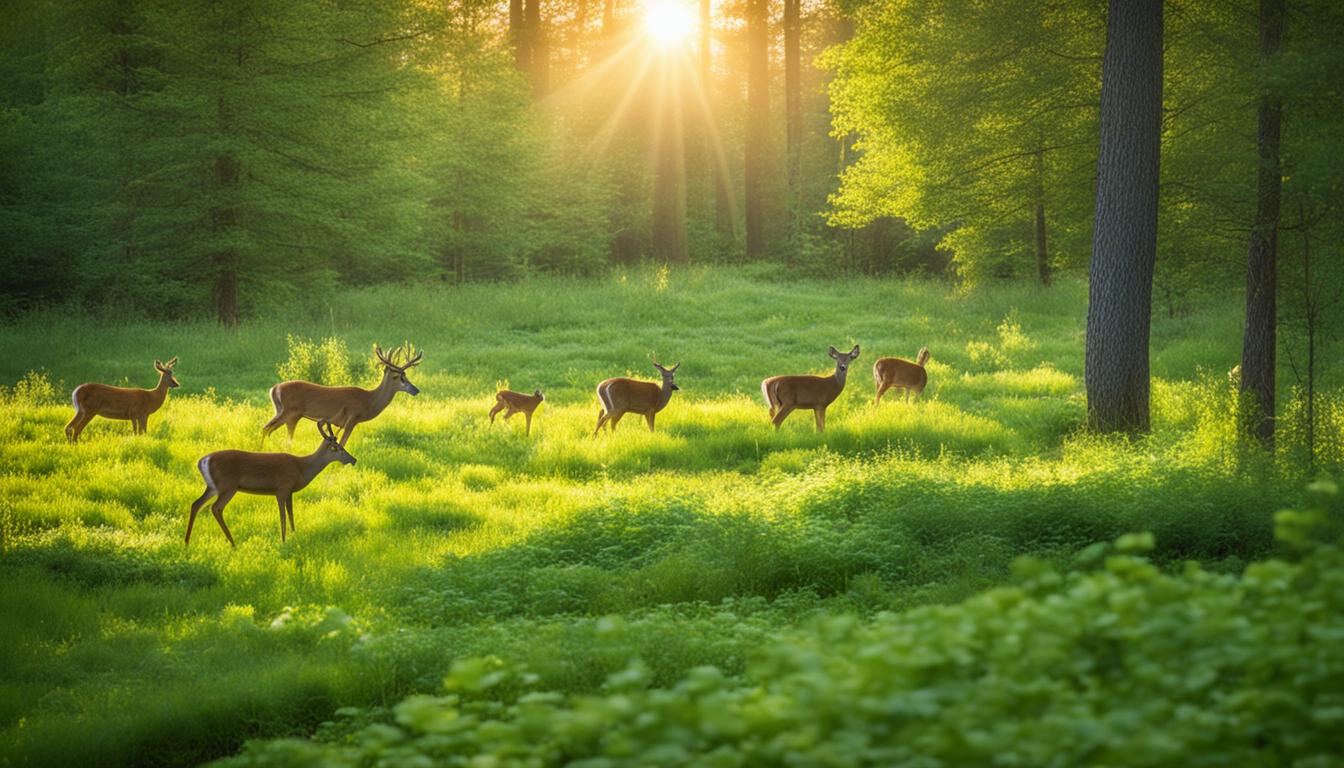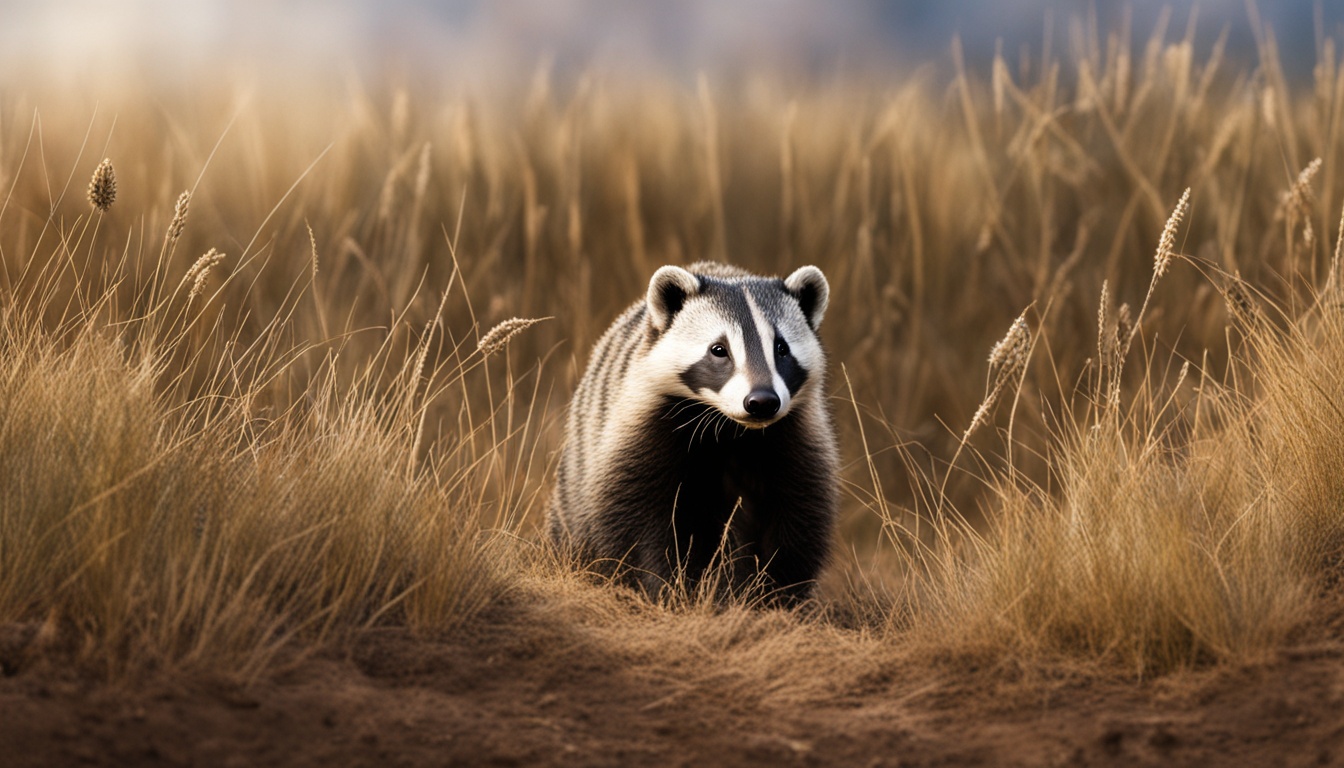Giant pandas are beloved creatures known for their black and white coloration and adorable appearance. If you’re a fan of these lovable bears, you’ll be delighted to discover some fascinating facts about them. From their unique traits to their conservation efforts, there’s so much to learn about giant pandas!
So, get ready to dive into the world of panda facts, interesting panda facts, and fun facts about pandas. You’ll be amazed by the wonders of these incredible animals.
The Life of a Panda
Pandas lead a fascinating life that is shaped by their diet, habitat, and behavior. Let’s delve into these aspects to gain a deeper understanding of these beloved creatures.
Diet
Pandas are primarily herbivores and their diet consists mostly of bamboo. In fact, bamboo makes up nearly 99% of their diet, which translates to consuming around 20 to 40 pounds of bamboo shoots and leaves each day. This bamboo-heavy diet is due to the panda’s unique digestive system that has evolved to efficiently process bamboo fibers.
While bamboo is their main food source, pandas are also known to consume other plant matter, such as fruits, flowers, and even the occasional small mammal or bird. However, bamboo remains their dietary staple and provides them with the necessary nutrients to thrive.
Habitat
Pandas are native to the mountainous regions of central China, where they reside in dense bamboo forests. These forests provide the pandas with both food and shelter, as the thick bamboo groves offer protection from predators and the cold temperatures in higher elevations.
Due to their reliance on bamboo, pandas are restricted to areas where this plant grows abundantly. They primarily inhabit the temperate forests of Sichuan, Shaanxi, and Gansu provinces in China. However, their habitat has become fragmented over the years due to human activities, leading to a decline in their population and placing them at risk of extinction.
Behavior
Pandas are generally solitary animals, with adults preferring to spend their time alone. They are most active during the early morning and late afternoon, while the rest of the day is typically spent resting or foraging for food.
Despite their solitary nature, pandas do communicate with one another through various vocalizations, scent marking, and body gestures. They also have a keen sense of smell, which helps them locate food and potential mates in their vast bamboo habitats.
Overall, the life of a panda is intricately connected to its diet, habitat, and behavior. Understanding these aspects is crucial for ensuring the conservation and protection of these remarkable creatures.
Panda Reproduction and Cubs
Giant pandas have a unique reproductive process that contributes to their conservation efforts. Due to their low reproductive rate and specialized diet, pandas have faced population challenges in the wild. Understanding their reproduction and cub-raising behaviors is crucial for protecting and increasing their population.
Panda Reproduction
Female pandas are only fertile for a short period of time, typically around two to three days, once a year. This limited window makes successful mating crucial for reproduction. Male pandas compete for the opportunity to mate with females, often engaging in playful wrestling to establish dominance. Once a male is chosen, mating occurs in a variety of positions, including face-to-face and back-to-back.
After mating, the female panda undergoes a delayed implantation process, where the fertilized egg does not immediately attach to the uterine wall. This delay can last for several months, ensuring that the pregnancy aligns with favorable environmental conditions and ample food resources. Gestation typically lasts between 95 and 160 days.
Cub Development and Adaptations
Panda cubs are born blind and helpless, weighing only about three to five ounces. They are dependent on their mother for nourishment and care. In the first few weeks, the mother spends the majority of her time nursing and caring for the cub in the privacy of a den.
Pandas have several adaptations that aid in their cub-rearing process. The mother has specialized wrist bones that function as an additional thumb, allowing her to grasp bamboo while cradling her cub. This adaptation is essential for the mother’s ability to feed herself and her offspring simultaneously.
Panda cubs grow rapidly during the first few months, reaching milestones such as opening their eyes and gaining mobility. At around six months old, they start to venture outside of the den and begin tasting solid foods. However, they continue to nurse until they are about a year and a half old. The mother gradually weans the cub off milk and teaches it to eat bamboo, passing on essential skills for survival in their natural habitat.
| Panda Reproduction and Cubs | Population | Species | Adaptations |
|---|---|---|---|
| Unique reproductive process | Low population | Giant panda (Ailuropoda melanoleuca) | Specialized wrist bones for bamboo consumption |
| Short fertile period | Conservation efforts | Endangered species | Delayed implantation for favorable conditions |
| Male competition for mating | Protection and increase | Unique to China | Rapid cub development and growth |
The Unique Traits of Pandas
Pandas possess a range of unique traits and adaptations that enable them to thrive in their natural bamboo-filled habitats. One of their most distinctive features is their specialized diet. While they are classified as carnivores, pandas primarily consume bamboo, with 99% of their diet consisting of this fibrous plant. This adaptation is made possible by their strong jaw muscles and enlarged wrist bones, which allow them to efficiently strip leaves and crush bamboo stalks.
Another remarkable trait of pandas is their distinct coloration. Their iconic black and white markings serve as excellent camouflage in their forest habitat. The black fur on their ears, eye patches, and shoulders helps them to blend into the shadows, while the white fur on their bodies provides effective camouflage in snowy conditions. This unique coloration is thought to aid in communication among pandas and may also serve as a visual deterrent to potential predators.
Pandas also possess adaptations that facilitate their survival and reproduction. For instance, they have an extended wrist bone called the “pseudo thumb” that functions as an opposable digit. This adaptation allows pandas to grasp bamboo more securely and efficiently. Additionally, female pandas have a narrow reproductive window of just a few days each year, making successful mating and reproduction a significant challenge for the species.
| Unique Traits of Pandas | Description |
|---|---|
| Specialized Diet | Pandas primarily consume bamboo, relying on their strong jaw muscles and enlarged wrist bones to process the fibrous plant. |
| Distinct Coloration | Pandas’ black and white markings provide camouflage in their forest habitat and may aid in communication. |
| “Pseudo Thumb” | Pandas have an extended wrist bone that functions like an opposable thumb, allowing them to grasp bamboo effectively. |
| Narrow Reproductive Window | Female pandas have a limited window for reproduction, presenting challenges for successful mating and cub-raising. |
Overall, pandas’ unique adaptations and traits have enabled them to navigate their bamboo-filled habitats and overcome various challenges. By understanding these remarkable characteristics, we can gain a deeper appreciation for these beloved creatures and the importance of their conservation.
Conservation Efforts and the Status of Giant Pandas
Giant pandas, with their endearing appearance and vulnerable status, have become a focal point for conservation efforts across the globe. Dedicated organizations and researchers have been working tirelessly to protect these beloved creatures and ensure their survival for future generations.
The main threat to panda populations is habitat loss due to deforestation and human encroachment. To mitigate this, conservation programs have been implemented to protect and restore bamboo forests, which are crucial for the pandas’ survival. Efforts have also been made to establish protected areas and corridors to connect isolated panda populations, allowing for genetic diversity and breeding opportunities.
The collaboration between local communities, governments, and international organizations has been instrumental in panda conservation. These partnerships have led to the successful implementation of conservation initiatives, such as conservation education programs, anti-poaching efforts, and research projects aimed at understanding panda behavior and reproductive patterns.
“The giant panda’s conservation status has improved over the years, thanks to the collective efforts of various stakeholders. However, there is still much work to be done to secure their long-term survival,” says Dr. Zhang, a leading panda researcher.
Today, the global giant panda population stands at approximately 1,800 individuals in the wild, marking a significant increase from previous years. This rise in numbers is a testament to the effectiveness of conservation strategies and the dedication of those involved in protecting these magnificent creatures.
| Year | Population Estimate |
|---|---|
| 1988 | 1,114 |
| 2001 | 1,596 |
| 2014 | 1,864 |
| 2021 | 1,800 (approx.) |
While the increase in population is encouraging, it is essential to continue conservation efforts to ensure the long-term survival of giant pandas. Continued research, habitat protection, and community involvement are crucial to secure a sustainable future for these iconic creatures.
Panda Conservation Challenges
Despite the positive progress made in panda conservation, several challenges persist. Climate change poses a significant threat to panda habitats, with rising temperatures affecting bamboo growth and availability. Additionally, increasing human activities and infrastructure development can lead to habitat fragmentation and disturbance.
Conservation efforts must also overcome the difficulties associated with captive breeding. Pandas have a low natural reproductive rate, and successful breeding in captivity requires careful monitoring and intervention. Genetic diversity is also a concern, as captive panda populations can become genetically isolated.
Addressing these challenges requires ongoing research, innovative conservation strategies, and global cooperation. With continued dedication and collaboration, we can ensure a brighter future for giant pandas and preserve their place in the natural world for generations to come.
Pandas at the National Zoo
The National Zoo in Washington, D.C. has been a cherished home for giant pandas for over 50 years. Since the arrival of Ling-Ling and Hsing-Hsing in 1972, these adorable creatures have captivated visitors from around the world. With their unique personalities and natural charm, the pandas at the National Zoo have become beloved ambassadors for their species.
The National Zoo’s panda program has played a crucial role in panda conservation efforts. It has participated in global initiatives to protect and breed giant pandas, ultimately contributing to the growth of the panda population. Through research, education, and breeding programs, the National Zoo has made significant contributions to the understanding and conservation of these magnificent creatures.
Panda History at the National Zoo
The panda history at the National Zoo dates back to 1972 when Ling-Ling and Hsing-Hsing were gifted to the United States by the People’s Republic of China as a symbol of friendship. This historic moment marked the beginning of a long-standing panda partnership between the two countries. The arrival of these pandas at the National Zoo sparked tremendous excitement and led to a surge in public interest in panda conservation.
Over the years, the National Zoo has celebrated many successful breeding and cub-raising experiences. One of the most notable achievements was the birth of Tai Shan in 2005, who became a national sensation and captured the hearts of millions. The National Zoo’s dedication to the welfare of its pandas has been evident in its ongoing efforts to ensure their health, happiness, and longevity.
| Notable Pandas at the National Zoo | Birth Year | Current Status |
|---|---|---|
| Ling-Ling | 1969 | Passed away in 1992 |
| Hsing-Hsing | 1970 | Passed away in 1999 |
| Tai Shan | 2005 | Rehomed to China in 2010 |
| Bao Bao | 2013 | Rehomed to China in 2017 |
| Bei Bei | 2015 | Rehomed to China in 2019 |
Pandas continue to be one of the biggest attractions at the National Zoo. Visitors can observe these incredible creatures in their specially designed habitats, which mimic their natural environment. The National Zoo’s commitment to the well-being and conservation of giant pandas ensures that future generations will continue to have the opportunity to appreciate and learn from these remarkable animals.

“The National Zoo’s panda program has been instrumental in raising awareness about panda conservation and has provided invaluable research opportunities. By studying the behavior, biology, and reproductive patterns of pandas, scientists can work towards ensuring the long-term survival of this incredible species.” – Dr. Sarah Thompson, Panda Conservation Expert
Panda Fun Facts
Pandas are renowned for their unique and adorable characteristics. Here are some fascinating and fun facts about these beloved creatures:
Panda Diet
- Pandas are primarily herbivores, with bamboo making up 99% of their diet.
- Although they mainly consume bamboo, pandas are also known to eat other plants, such as fruits, flowers, and even meat on rare occasions.
- They have a special thumb-like bone called a sesamoid bone, which helps them grip and manipulate bamboo stems.
Panda Appearance
- While pandas appear to have black and white fur, their skin underneath is actually black.
- Their distinct coloration is believed to help them blend in with their snowy surroundings and communicate with other pandas.
- Pandas have large, round heads with black eye patches, giving them an endearing facial expression.
Panda populations have been steadily increasing due to conservation efforts and captive breeding programs.
Panda Behavior
- Pandas are solitary animals, spending most of their time alone except during the mating season.
- They are known for their gentle nature and prefer to avoid conflicts whenever possible.
- Pandas have a unique way of marking their territory by rubbing their bodies against trees to leave their scent.
These fun facts about pandas highlight their specialized diet, distinctive appearance, and intriguing behaviors. Their conservation status has improved over the years, thanks to dedicated efforts and increased awareness. By learning more about pandas, we can continue to appreciate and protect these remarkable creatures.
| Fact | Explanation |
|---|---|
| Panda populations | Conservation efforts have led to an increase in panda populations, showing positive results in protecting their habitats. |
| Panda diet | Bamboo is the main staple of a panda’s diet, providing them with the necessary nutrients and energy. |
| Panda appearance | The black and white fur of pandas helps them blend in with their environment and aids in communication. |
| Panda behavior | Pandas are solitary animals and have unique marking behaviors to establish their territory. |
Conclusion
Giant pandas are truly remarkable creatures with a host of interesting and fun facts. From their iconic black and white coloration to their adorable appearance, pandas never fail to captivate our hearts. But there’s more to these beloved creatures than meets the eye! Learning about panda facts not only brings joy but also highlights the importance of panda conservation.
Thanks to dedicated efforts, the conservation status of giant pandas has seen significant improvement in recent years. Conservation initiatives have focused on protecting their natural habitats and increasing their population. By understanding the unique characteristics and behaviors of pandas, we can appreciate the incredible diversity of the natural world and the need to safeguard these incredible creatures.
So, whether you’re fascinated by the adorable antics of panda cubs or intrigued by their bamboo-filled diet, exploring the world of giant pandas is an opportunity to unleash your curiosity. By spreading awareness about panda conservation and sharing the interesting panda facts you’ve discovered, you can make a positive impact in protecting these remarkable creatures.
What are some interesting similarities and differences between giant pandas and eagles?
Giant pandas and eagles share a similarity in being endangered species, but they differ in habitat and diet. Pandas are found in bamboo forests of China, while eagles inhabit various regions worldwide. The fascinating facts about eagles include their exceptional eyesight and powerful talons for catching prey.
FAQ
What are some interesting facts about giant pandas?
Giant pandas are known for their black and white coloration and adorable appearance.
What is the life of a panda like?
A panda’s life revolves around its diet, habitat, and behavior.
Tell me about panda reproduction and cubs.
Panda reproduction, population, species, and adaptations are unique and fascinating.
What are some unique traits of pandas?
Pandas have several remarkable characteristics that make them well-suited for their bamboo-filled habitats.
How are giant pandas being conserved?
Giant pandas have been the focus of significant conservation efforts due to their endangered status.
What can you tell me about pandas at the National Zoo?
The National Zoo in Washington, D.C. has been home to giant pandas for over 50 years.
Share some fun facts about pandas.
Pandas have many unique and interesting characteristics that make them fascinating creatures.










